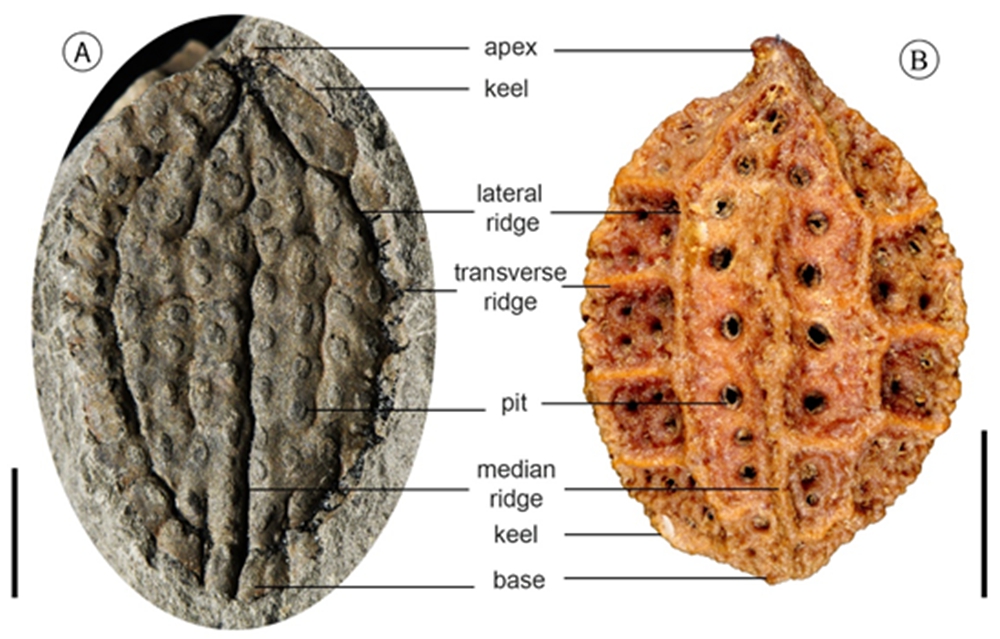Miquelia is a genus of plants in the family Icacinaceae, a pantropical family of asterid angiosperms comprising 23 genera and approximately 160 species. This genus consists of ten extant species mainly distributed in Southeast Asia. Notablely, fossil evidence of Icacinaceae is sparse in the paleotropics where the family exhibits its greatest diversity today.
In a study published in Review of Palaeobotany and Palynology, researchers from Xishuangbanna Tropical Botanical Garden of the Chinese Academy of Sciences (CAS) reported the first endocarp fossil record of Miquelia, namely Miquelia yenbaiensis, originating from the late Miocene of northern Vietnam.
During their field investigations in Vietnam, the researchers unearthed an endocarp fossil of Miquelia from the the finely-grained sandstones located in Yen Bai City, Yen Bai Province. After careful morphological studies and comparison with four available endocarps of extant species of Miquelia, the researchers confirmed that the fossil specimen represented the first fossil record of Miquelia, providing the first fossil evidence of the genus.
They named it as Miquelia yenbaiensis in recognition of the location in Yen Bai City, Yen Bai Province, where it was discovered.
The fossil specimen is characterized by having a bilateral symmetry, a slightly asymmetrical apex and symmetrical base, a keel surrounding the endocarp in the plane of symmetry, and a ridged and pitted surface. It can be distinguished from other genera by the presence of two pits situated between two consecutive longitudinal ridges and an increased number of pits on each endocarp face.
“The discovery of Miquelia fossils in northern Vietnam indicates that this genus has been an integral component of the Southeast Asian flora since its initial appearance,” said LI Shufeng of XTBG.
The unearthing of the Miquelia endocarp fossil augments the historical distribution of the Icacinaceae family to tropical Asia during the late Miocene epoch. This discovery provides the youngest known fossil record for the family. Furthermore, it indicates a growth environment for M. yenbaiensis in the Red River valley that is analogous to that of the late Miocene period.

Morphological comparison of endocarps of fossil and extant species of Miquelia. (Image by XTBG)
Published: 22 January 2025

